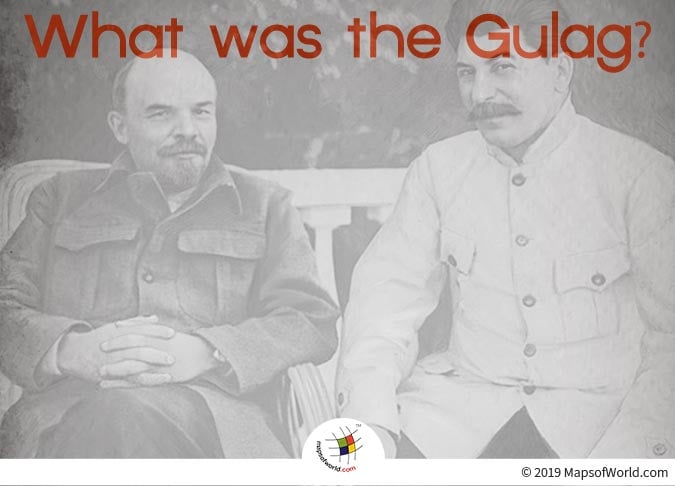

The Gulag was a creation of the Soviet Union.
The Gulag was a forced-labor camp system that operated in the former Soviet Union. The system began in the era of Lenin and reached its peak under the Stalin administration. At one time, the camp hosted millions of people who ranged from small-time criminals to reputed political prisoners. The conditions at the Gulag can be compared to that of the Nazi concentration camps. The living conditions were pitiful and the torture techniques extreme. The mortality rate at the camps was high and reached nearly 20 percent between 1942-43 when WWII was raging. It has been estimated that between 1930 to 1953, around 1.5 million to 1.7 million prisoners died due to inhumane conditions and treatment. However, estimates of various sources differ.
The Gulag was a creation of the Soviet Union. The first Gulag came into being in 1919 during the reign of Vladimir Lenin and within two years around, 84 camps were in operation. But it was not until Stalin’s rule that the number of gulag camps and prisoners increased exponentially. There are conflicting opinions regarding the number of prisoners that were housed in the camps. The figures, as per various sources, range from 25 million prisoners between the 1929 to 1953 and 510,307 in 1934 to 1,727,970 in 1953. As the camps relied on forced labor, Stalin considered these camps as effective tools that would help the Soviet Union achieve industrialization. Further, the camps were a means of oppressing the critics of Stalin and Lenin.
The Gulag not only housed petty criminals but also peasants opposed to the government, members of the Communist Party and the military who were purged, Axis prisoners during WWII, suspected traitors, dissident intellectuals, and more. Often innocent people also became victims of Stalin’s purges and were sent to the gulag. From 1929 to 1953, there were three major waves of prisoner arrivals at the gulag. The first arrivals were during the phase of collectivization of Soviet agriculture between 1929 to 1932. This period witnessed the large-scale imprisonment and execution of the kulak class and the wealthy peasants. They were considered as capitalists by Stalin. The second wave was from 1938 to 1940 when Stalin’s purges were at their height. This period witnessed the imprisonment of political prisoners such as the members of the communist party and military officers. These were later joined by intellectual, students, writers etc. The third phase followed WWII.
At their peak, every camp housed between an estimated 2,000 to 10,000 prisoners. Many of the Gulag’s were a form of corrective labor colonies where prisoners performed a number of duties ranging from working on general construction projects, felling timber, or working in mines. Before WWII, the camps provided around 76 percent of the country’s tin, 60 percent gold, 46.5 percent of nickel. With the start of the war the prisoners became involved with the production of arms and supplies to aid the Soviet army.
The conditions at the camp were harsh and cruel. The workers were made to work for long hours and under very poor conditions which included simple tools and no safety equipment. Starvation and disease were rampant. If a worker refused to work, he could be starved or executed. Inadequate food & clothing, poor hygiene & healthcare, overcrowding, and the harsh climate wiped out around 10 percent of the population of the camps every year.
The death of Stalin saw the Gulag system coming to an end. Nikita Khrushchev, who was the successor of Stalin, was an opponent of the gulag system and purges. Thus, with his taking over the leadership of the Soviet Union, millions of prisoners were released. Though some of the camps were restructured in the 1970s and 80s to house anti-Soviet nationals, the process of completely eliminating the camps began in 1987 under Mikhail Gorbachev.
Related Links:
The Republic of Madagascar is an island country located in the Indian Ocean, off the…
The Euro is the official currency of the European Union. It is, however, not incumbent…
There are many countries or regions that are partially recognized by the UN, have disputes…
The Alaska Statehood Act was signed into law by President Dwight D. Eisenhower in 1958,…
The name Persia may, however, only be used to refer to Iran in some contexts.…
Hawaii is an Island State in the US. It is one of the 50 states…